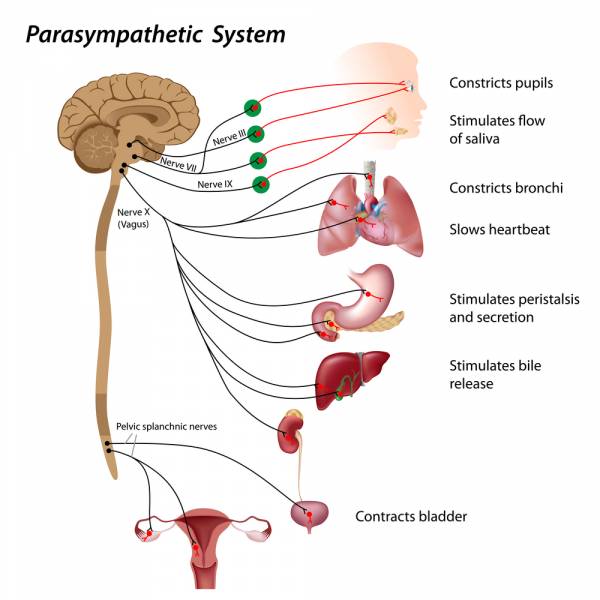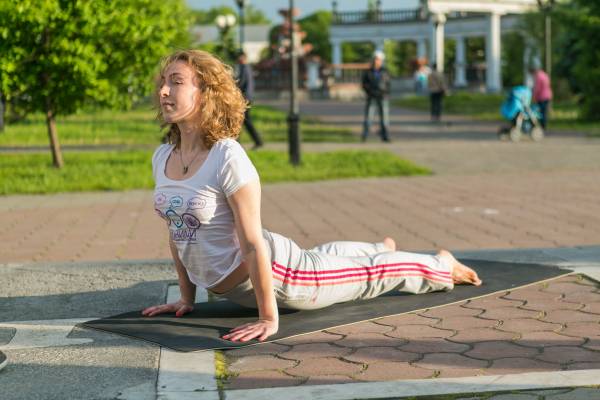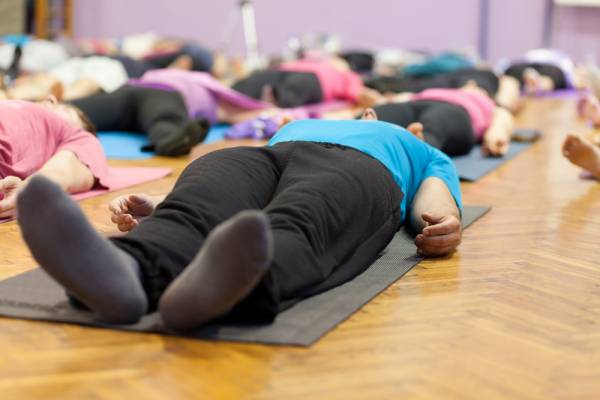Whether you practice yoga, run, or work out – or all three – you most likely want to optimize your efforts. With the millions of dollars spent on self improvement, our intentions are clear: we want to be our best selves.
Then the question arises – what is our best self? How do we determine what will optimize our efforts and give us the best results? Is it to work harder? To get in the gym more often? To do more yoga? What is the recipe for the finest you?
We hear this a lot, but what does it really mean?
You could Google “how to make my workout more intense” or you could search for power yoga. Or you could explore a whole other side of optimization: activating the parasympathetic nervous system.
This is not a modality that type-A people typically turn to for more, better, stronger, but in the past few years, science has brought to the forefront the importance of our parasympathetic nervous systems in helping us reach our best.
Introducing the Parasympathetic Nervous System
You have probably heard of the sympathetic nervous system and its ability to invoke the fight, flight, or freeze responses. The parasympathetic nervous system is the sweet sister of the sympathetic nervous system. It takes us into the rest-and-digest mode. This is the path to deep rejuvenation for the body, mind, and soul. Relaxation is the yin to our fitness efforts’ yang.1
“When the body goes into a relaxed state, your blood pressure is lower, your immune system functions at a higher level, your heart rate lowers, and you breathe at a slower rate.”
Relaxation has proven its importance across different fitness modes. It is commonly accepted wisdom in strength training that you should rest muscle groups to allow them to recover before training them again. Failure to do so results in increased damage and muscular breakdown. Likewise, many of the leading yoga studios offer restorative yoga, which has proven to be a major ingredient in creating balance in a yoga practice. The time has come to really take a look at what all this means: why does relaxation help optimize fitness efforts?

The parasymphathetic system takes us into “rest and digest” mode.
How It Works
When the body goes into a relaxed state, your blood pressure is lower, your immune system functions at a higher level, your heart rate lowers, and you breathe at a slower rate. Your antibody titers and natural killer cells can improve significantly after practicing relaxation techniques.2 Sleep patterns improve, digestion function increases, and overall health becomes greater when these relaxation techniques are used.
“Regardless of the system of relaxation and parasympathetic nervous system activation, there is one component common to all of them: the vagus nerve.”
But it is not surprising that people do not incorporate relaxation routines into their lives. We are a workaholic, over-doing, stressed-out culture that strongly rewards type-A behavior and multitasking. There has been little value put on this other side of the fitness world until recently. Now, many leading teachers in fitness have begun to acknowledge the impact of stress reduction through the use of a variety of modalities.
The Role of the Vagus Nerve
Regardless of the system of relaxation and parasympathetic nervous system activation, there is one component common to all of them: the vagus nerve. Most of us are familiar with the central nervous system, the bundle of nerves that leaves the brain and moves into the spinal column. The vagus nerve is part of the sensory-somatic system, a subdivision of the peripheral nervous system. Peripheral nerves make their way directly out into the body. Most begin at the spinal column, but within the peripheral nervous system there are a group of nerves called cranial nerves that exit directly from the brain. The vagus nerve is the tenth cranial nerve. It exits at the medulla, part of the brainstem.
The Latin root of the word vagus is “wandering.” This is a key characteristic of this little gem within the world of relaxation. It begins its journey below the base of the brain, roams down the throat along the esophagus, continues its sojourn near the lungs and heart, and innervates the digestive system.

Certain yoga poses like backbends and forward folds can activate the parasympathetic nervous system.
Vagal nerve function has a strong relationship to the parasympathetic nervous system, the system responsible for rest, digestion, and reproductive functions. It is also the key to activating the parasympathetic nervous system. This wandering nerve can help us de-stress and get healthy. However, most of our lives are spent in the sympathetic nervous system, the fight, flight, or freeze modes. When the sympathetic nervous system is active, then stress hormones flood our systems, creating a state of dis-ease within. Therefore, it is important we learn how to activate our vagus nerve.
How to Activate It
Because of the pathway of the vagus nerve, long deep breathing is the number one key to activating the vagus nerve. Breathing can be involuntary (something the vagus nerve does for us when we aren’t paying attention), but it can also be something we do consciously. By bringing awareness to the breath, lengthening and deepening it, you turn on the vagus nerve, giving your body the opportunity to rejuvenate.
So, let’s stop and breathe with awareness for ten minutes:
As you inhale, lift your collarbone.
As you exhale, soften and relax.
As you inhale, expand your ribs out under your arms.
As you exhale, soften and relax.
As you inhale, expand your ribs across your back
As you exhale, soften and relax.
When you sit, close your eyes, and utilize your system’s own action, you enhance your health and wellness.
Here are a number of pathways to the vagus nerve. Choose your favorite:
- Immerse your face (especially the forehead, eyes, and two-thirds of your cheeks) in cold water for three minutes.
- Practice restorative yoga and include gentle backbends, forward bends, and twists.
- Include inversions in your practice like downward dog or legs up the wall.
- Chant and sing in low resonant tones.
- Immerse your tongue in saliva while doing long deep breathing.
- Practice Qigong.
- Laugh with deep diaphragmatic laughs.

Restorative yoga is one way to activate the vagus nerve.
The benefits of vagus nerve stimulation (other than relaxing the body, mind, and soul – and really, isn’t that enough of a reason?):
- It reduces the inflammatory response throughout our system.
- It helps the brain emit new cells.
- It decreases depression and anxiety and lifts our mood. Forty million Americans are affected by mood disorders. Enough said!
- It assists in developing razor-sharp memory, and there are so many applications for increased memory capacity in our culture like Alzheimer’s work, traumatic brain injuries, and plain-and-simple everyday life.
- It raises your immunity. How about staying healthy and taking vacations to beautiful faraway places instead of lying on the couch suffering through yet another bout of bronchitis?
- It raises the level of endorphins, which bring about positive feelings in the body and reduce the sensation of pain.
Get to know yourself in your parasympathetic nervous system. Get to know your vagus nerve. Create more joy. Stay happy. Be more energetic. Live a more compassionate life toward yourself and others. All of this will optimize your fitness efforts and more.
More Like This:
- Heart Rate Variability: The New Science of Recovery
- The Science Behind Why “I Think I Can” Really Works
- What the Heck Is Restorative Yoga and Why Should I Do It?
- New on Breaking Muscle Today
References:
1. Internet Encyclopedia of Philosophy. Yinyang (Yin-yang).
2. Integrative Restoration Institute
3. Daniel Goleman. “Relaxation: Surprising Benefits Detected.” The New York Times. May 13, 1986.
Photos courtesy of Shutterstock.






